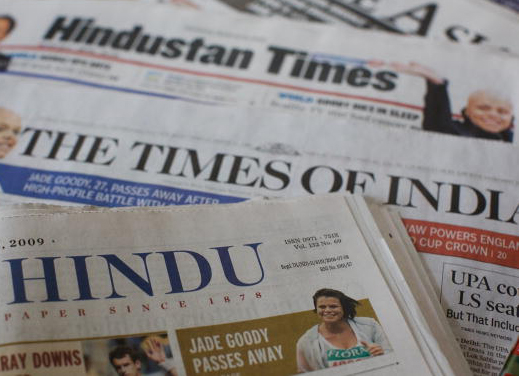
India ready to sign FTA with Asean: PM
Eyeing greater cooperation with South East Asian countries on economic and security issues, India today announced a separate Mission for ASEAN region to be set up in Jakarta with a full-time resident Ambassador. Addressing the 11th ASEAN-India Summit here, Prime Minister Manmohan Singh also said that India was ready to sign a Free Trade Agreement (FTA) with ASEAN on services and investment to boost their bilateral trade to $100 billion by 2015, from $76 billion last year. Singh said over the last two decades, India and ASEAN have established a comprehensive agenda of cooperation and a wide-ranging framework to pursue it. About progress on relations between India and ASEAN, Singh said that "India stands ready for the signature of the India-ASEAN Free Trade Agreement on Services and Investment by the end of this year and its early implementation.
(Source: Business Standard)
India plans 17.5% duty on wireless equipment to dissuade imports
To encourage domestic manufacturing of information technology (IT) products and reduce India’s import dependency, the government may impose customs duty up to 17.5% on certain wireless telecommunication equipment used for third and fourth generation mobile networks. India is a signatory to the first Information Technology Agreement (ITA-1) under the World Trade Organization, under which customs duty was abolished on many technology products. According to the finance ministry, however, the government believes certain telecommunication equipment was not covered under the agreement, and that it can levy customs duty on these. Experts say while it may be possible for India to circumvent the ITA-1 restrictions, levying customs duty on such products will increase telecom rates for customers while doing little to encourage domestic manufacturing, at least for now. However, domestic manufacturing remains essential to curb India’s high dependence on electronics imports. urrently, India imports $33 billion of electronic goods, behind only oil and gold. India’s electronics import bill is estimated to touch $320 billion by 2020, possibly exceeding that of crude oil, if domestic manufacturing is not encouraged at this stage, Kapil Sibal, minister of communications and information technology, said in January. Domestic demand for electronics is estimated to touch $400 billion by 2020.
(Source: Live Mint)
Trade deficit at 30-month low as bullion, oil imports fall
A third successive month of double-digit export growth along with a sharp compression in imports saw the trade deficit narrow to a 30-month record in September, raising hopes that the worst of the current account deficit and rupee weakness are behind India. Stock indices rallied sharply after the data release while the rupee erased part of its intra-day losses to close marginally weaker against the dollar. Exports rose 11.2% in September while imports fell 18.1%, which compressed the trade deficit to $6.8 billion, the lowest since March 2011, data released by the commerce department on Wednesday showed. After the better-than-expected trade deficit numbers, experts expect the current account deficit to stay below the $70 billion estimated by the government for the current year. India's current account deficit rose to an all-time high 4.8% of GDP, or $88.2 billion, in 2012-13.
(Source: Financial Express)
Indian pepper exports in soup
India is literally out of the global pepper mart as it currently offers the highest price along with Indonesia. General shortfall in supply lead to the sharp increase in prices. Both India and Indonesia now offer US $7,450/tonne for ASTA grade pepper. Business is brisk only in Brazil since that country offers the lowest tags across the global markets. India is only likely to export about 1,000 tonnes in September which is also because gains reaped from dollar appreciation. According to leading exporters, exports from India were weak in the current financial year on higher prices, poop supply conditions and quality related issues. Global demand is also weak owing to slowdown in major European economies and in the US. Exporters told Business Standard that India could export hardly 6,000 tones in the April – September period of the current financial year. According to them, this is the right opportunity for India as Vietnam and Indonesia, two largest exporters in the world, are literally not exporting pepper because of short supply. But India is missing this opportunity due to higher prices and a supply crunch. Global pepper market, including black and white pepper is likely to remain tight for the rest of this year as leading producing countries are having very thin stocks. Vietnam is not even releasing indication prices as the country’s stock position is very bad. On the other hand, Indonesia is only giving indication prices at $7,450/tone.
(Source: Business Standard)
Economic Section
Royal Thai Embassy















